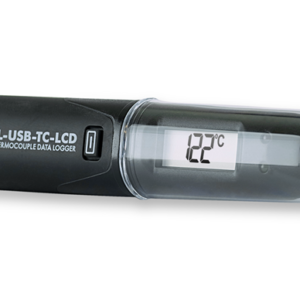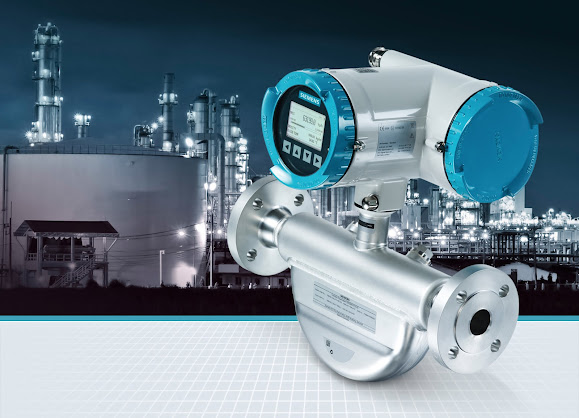A Comprehensive Guide to Choosing the Best Temperature Logger for Your Needs
Welcome to our comprehensive guide on choosing the best temperature monitor for your specific needs. Temperature loggers play a crucial role in various industries, ensuring that temperature-sensitive products and processes are monitored accurately and efficiently.
By selecting the right temperature logger, you can maintain product quality, comply with industry regulations, and avoid costly losses due to temperature deviations.
Understanding Temperature Loggers
Before delving into the factors to consider when choosing a temperature logger, it is essential to understand what they are and how they work. A temperature logger is a device used to measure and record temperature data over a specific period. These compact devices are equipped with temperature sensors and data storage capabilities, allowing for accurate and reliable temperature monitoring.
Temperature loggers work by continuously measuring the temperature at set intervals and storing the data internally. Depending on the logger, the data can be retrieved directly from the device or transferred to a computer for analysis. This data provides valuable insights into temperature fluctuations, allowing businesses to make informed decisions.
Different Types of Temperature Loggers Available in the Market
When it comes to selecting a temperature logger, you have several options to choose from. The type of logger you choose depends on factors such as your monitoring requirements, budget, and the specific industry you operate in. Here are some of the different types of temperature loggers available:
- Single-Use Disposable Loggers: These loggers are designed for one-time use and are typically more affordable compared to reusable loggers. They are ideal for short-term temperature monitoring or shipping applications where the logger is not expected to be retrieved.
- Multi-Use Loggers: Multi-use loggers can be reused multiple times, making them cost-effective for long-term monitoring. They can be either wired or wireless, providing flexibility in terms of data retrieval.
- Wired Loggers: Wired loggers require a physical connection to a computer or data collector for data retrieval. They offer reliable data transmission and are suitable for applications where real-time monitoring is not a requirement.
- Wireless Loggers: Wireless loggers provide the convenience of remote data retrieval without the need for physical connections. They use various wireless communication technologies such as Wi-Fi, Bluetooth, or radio frequency to transmit data to a central receiver or directly to a computer or mobile device.
- Remote Monitoring Systems: Remote monitoring systems are a comprehensive solution for real-time temperature monitoring. These systems consist of multiple wireless loggers, strategically placed sensors, and a central monitoring station. They offer real-time data transmission, alerts for temperature deviations, and centralized data management.
Factors to Consider Before Choosing a Temperature Logger
Now that you understand the different types of temperature loggers available, let's explore the key factors you need to consider before making a decision:

- Accuracy and Sensitivity
When it comes to temperature monitoring, accuracy is of utmost importance. Ensure that the temperature logger you choose has a high level of accuracy and sensitivity. Look for loggers with specifications that match your desired temperature measurement requirements. Additionally, consider factors such as calibration options and the ability to compensate for external factors that may affect temperature readings.
- Measurement Range
Determine the range of temperatures you need to monitor in your specific application. Some loggers may have limited temperature ranges, so it is crucial to select one that can handle the extremes of your monitoring environment. Consider both the minimum and maximum temperatures you need to measure to ensure the logger can accurately capture the entire temperature range.
- Data Logging Capacity and Sampling Rates
Evaluate the data logging capacity of the temperature logger, which refers to how much data it can store before it needs to be retrieved or downloaded. Consider the frequency at which data needs to be recorded and the duration of your monitoring period. Ensure that the logger has enough storage capacity to accommodate your data logging requirements.
Sampling rate is another important factor to consider. It refers to how frequently the logger records temperature readings. Higher sampling rates provide more detailed data but may consume more battery power and storage capacity. Select a sampling rate that balances your need for accuracy and the resources available on the logger.
- Battery Life and Power Source
The battery life of a temperature logger is crucial, especially for long-term monitoring applications. Assess the battery life provided by the logger and compare it to your monitoring duration. If you require extended monitoring periods, consider loggers with longer battery life or options for external power sources. Rechargeable batteries can be a cost-effective solution for loggers that require frequent battery replacements.
- Software Compatibility and Data Management
Check if the temperature logger's software is compatible with your devices or systems. Ensure that the software is user-friendly and offers features such as data retrieval, analysis, and storage capabilities. Consider the ease of exporting data to other software applications or cloud-based platforms for further analysis or reporting.
Types of Temperature Loggers Available
Now let's dive deeper into the types of temperature loggers available and their specific features and applications:
- Single-Use Disposable Loggers
Single-use disposable loggers are an economical option for short-term temperature monitoring. These loggers are often pre-programmed with specific temperature ranges and have limited data storage capabilities. They are commonly used in the pharmaceutical and food industries for shipping temperature-sensitive products.
While single-use loggers may not offer the same level of customization and flexibility as reusable loggers, they are suitable for applications where the logger is not expected to be retrieved or where cost is a significant consideration.
- Multi-Use Loggers
Multi-use loggers, as the name suggests, can be used multiple times, making them a cost-effective solution for long-term temperature monitoring. They offer greater flexibility and customization compared to single-use loggers. Here are the two main types of multi-use loggers:
- Wired Loggers
Wired loggers require a physical connection to a computer or data collector for data retrieval. They often use USB or serial connections to transfer data. Wired loggers are known for their reliability and accuracy in data transmission. They are suitable for applications where real-time monitoring is not a requirement, and data retrieval can be carried out periodically.
One advantage of wired loggers is that they do not rely on battery power, making them suitable for applications where extended monitoring periods are necessary. However, the physical connection can limit the flexibility of data retrieval.
- Wireless Loggers
Wireless loggers offer the convenience of remote data retrieval without the need for physical connections. They use various wireless communication technologies to transmit data to a central receiver, computer, or mobile device. Here are some common wireless communication technologies used in temperature loggers:
- Wi-Fi: Wi-Fi-enabled loggers can connect to an existing Wi-Fi network, allowing for easy data retrieval and monitoring from any location with internet access. They offer real-time data transmission and are suitable for applications where immediate alerts and remote monitoring are required.
- Bluetooth: Bluetooth-enabled loggers allow for wireless data retrieval and monitoring within a short range. They are commonly used for applications where data needs to be retrieved from close proximity or where data transfer to a mobile device is preferred.
- Radio Frequency (RF): RF-based loggers use radio waves to transmit data over a distance. They offer greater range compared to Bluetooth loggers and are suitable for applications where data needs to be transmitted across larger areas or multiple floors.
Wireless Data logger provide flexibility in terms of data retrieval and monitoring, allowing for real-time data analysis and immediate response to temperature deviations. They are widely used in industries such as healthcare, laboratories, and manufacturing, where precise temperature control is essential.
- Remote Monitoring Systems
Remote monitoring systems consist of multiple wireless loggers, strategically placed temperature sensors, and a central monitoring station. These systems provide real-time temperature monitoring, data transmission, and alerts for temperature deviations. Remote monitoring systems are ideal for applications where immediate action is required in response to temperature fluctuations.
Conclusion
Choosing the best temperature logger for your specific needs requires careful consideration of various factors such as accuracy, measurement range, data logging capacity, power source, software compatibility, and budget.
By understanding the different types of temperature loggers available and their specific features, you can select a logger that meets your monitoring requirements and provides accurate and reliable temperature data.


Comments
Post a Comment